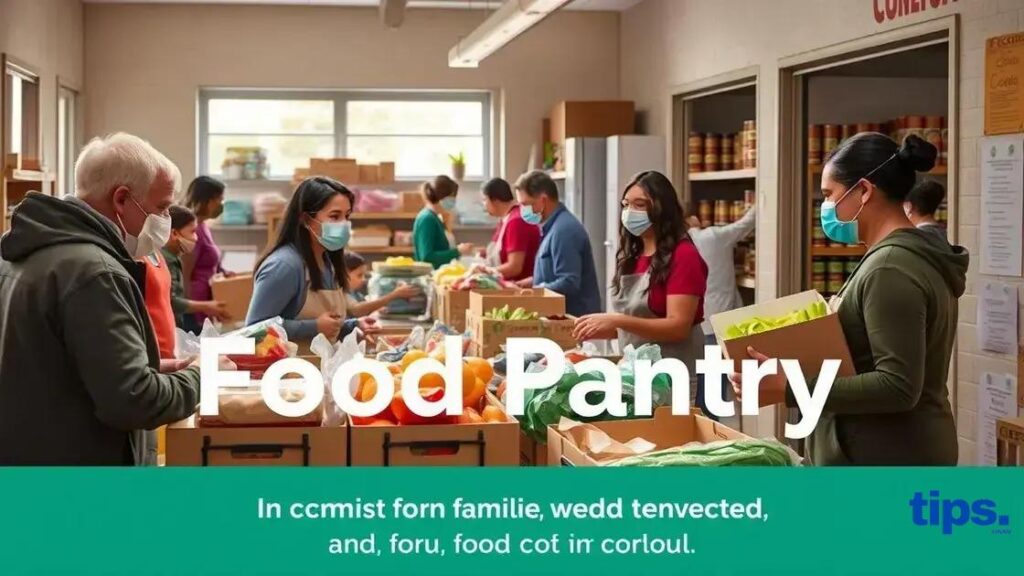Food assistance programs: unlocking support for families

Anúncios
Food assistance programs provide essential support to families in need by offering access to nutritious food, thereby reducing hunger and improving overall community health.
Food assistance programs play a crucial role in supporting families facing food insecurity. Have you ever wondered how these initiatives work and the difference they make in our communities? Let’s dive in and explore their importance.
Anúncios
| Topic | Insight | Tip |
|---|---|---|
| What is it? | Help for hungry families | Supports better nutrition |
| Program Types | SNAP, WIC, food banks | Check what fits you |
| Eligibility | Income, household size | See SNAP rules online |
| How to Apply | Online forms available | Have documents ready |
| Community Impact | Boosts health, economy | Reduces food insecurity |
| Main Challenges | Stigma, low awareness | Raise local awareness |
| Best Practices | Partner, listen, adapt | Tailor to local needs |
| Future Trends | Tech and nutrition focus | Use apps and feedback |
Understanding food assistance programs
Food assistance programs are essential initiatives designed to help those facing hunger and food insecurity. These programs provide resources for individuals and families in need, ensuring access to nutritious food. Understanding how these programs work can empower you to seek assistance or help others in your community.
There are various types of food assistance programs, such as government initiatives, nonprofit organizations, and local community services. Each serves a unique purpose, catering to diverse needs.
Anúncios
Types of Food Assistance Programs
Commonly recognized food assistance programs include:
- The Supplemental Nutrition Assistance Program (SNAP)
- Food banks and pantries
- School meal programs
These programs are crucial in addressing food scarcity. For more detailed information about available resources, visit the USDA SNAP website.
Types of food assistance available
There are several types of food assistance programs available to support individuals and families in need. Each program serves different populations and has unique eligibility requirements.
One of the most well-known programs is the Supplemental Nutrition Assistance Program (SNAP). This program provides assistance to purchase food for low-income households.
Other Common Food Assistance Programs
Some other programs include:
- WIC (Women, Infants, and Children): Provides healthy food and nutrition education.
- National School Lunch Program: Offers free or reduced-cost lunches to eligible students.
- Food banks and pantries: Distribute donated food to individuals and families.
These programs work together to reduce hunger in communities. For more details about available food assistance options, visit the USDA Food and Nutrition Service website.
Eligibility criteria for food assistance
Eligibility for food assistance programs often depends on several factors, including income, household size, and citizenship status. Each program may have specific rules that determine who can receive support.
For example, many programs require that your household income falls below a certain level, known as the federal poverty line. This ensures that assistance goes to those who need it most.
Common Eligibility Criteria
Here are some typical eligibility requirements:
- Income limits: Households must meet specific income thresholds.
- Residency status: Applicants must be legal residents or U.S. citizens.
- Household size: The number of people in your household can influence eligibility.
For more information about eligibility and how to apply, visit the USDA SNAP Eligibility page.
How to apply for food assistance

Applying for food assistance can seem daunting, but it is a straightforward process. Many programs offer online applications, making it easier for you to receive help.
To start, you need to gather some important information such as income, household size, and any other relevant documentation. Having this information ready will speed up the application process.
Steps to Apply for Food Assistance
Here are the general steps you should follow when applying:
- Visit the official website of the food assistance program you are interested in.
- Complete the application form accurately and truthfully.
- Submit any required documents for verification.
Once you submit your application, you might be contacted for an interview or to provide additional information. For more detailed guidance, you can visit the USDA SNAP application page.
Impact of food assistance on communities
The impact of food assistance programs on communities is profound and far-reaching. These programs not only provide immediate relief from hunger but also contribute to long-term community development.
Access to food assistance helps families maintain better nutrition, which positively affects health outcomes. Healthy families mean healthier communities.
Benefits of Food Assistance Programs
Some key impacts include:
- Reduced food insecurity: Programs help prevent hunger and malnutrition.
- Economic support: Food assistance stimulates local economies by allowing families to allocate their limited resources to other essential needs.
- Increased community engagement: Food assistance programs often involve local organizations and volunteers, fostering a sense of community.
To learn more about the positive effects of food assistance, visit the No Kid Hungry website.
Challenges faced by food assistance programs
Despite the many benefits of food assistance programs, these initiatives face significant challenges that can hinder their effectiveness. Understanding these challenges is essential for improving and sustaining food assistance efforts.
One major issue is funding. Many programs rely on government support or donations from organizations. A reduction in funding can lead to decreased resources for those in need.
Common Challenges in Food Assistance
Key challenges include:
- Limited outreach: Many eligible individuals are unaware of the assistance available to them.
- Stigma: Some individuals feel ashamed to seek help, which can prevent them from accessing necessary resources.
- Logistical issues: Certain areas may lack the infrastructure needed to distribute food effectively, making it hard for some communities to receive assistance.
To address these challenges, collaboration between governments and community organizations is critical. For further insights on food assistance challenges, check the Food Research and Action Center (FRAC) website.
Best practices for effective food assistance
Implementing best practices in food assistance programs can greatly enhance their effectiveness and reach. These practices focus on improving service delivery and ensuring that individuals in need receive the support they require.
Successful food assistance relies on engaging communities and streamlining processes to meet the specific needs of those being served.
Effective Strategies for Food Assistance Programs
Some best practices include:
- Building partnerships: Collaborate with local organizations and businesses to expand resources and outreach.
- Conducting regular assessments: Evaluate community needs frequently to adjust programs and services based on feedback.
- Enhancing communication: Provide clear and accessible information about services available to potential clients.
To learn more about effective strategies for food assistance, visit the Feeding America website.
Future of food assistance programs

The future of food assistance programs holds great promise as communities adapt to evolving needs. Innovations and improvements are crucial to addressing food insecurity effectively.
As technology advances, food assistance programs are integrating new methods to enhance service delivery and reach more people in need.
Trends Shaping the Future of Food Assistance
Several trends are emerging that could transform food assistance:
- Use of technology: Apps and online platforms can simplify the application process and make it easier for families to access resources.
- Focus on nutrition: Programs are increasingly prioritizing healthy food options to improve overall health outcomes for recipients.
- Community engagement: There is a growing emphasis on involving local stakeholders in designing and implementing assistance programs.
To learn more about the future developments in food assistance, visit the Food Research and Action Center (FRAC) website.
In summary, food assistance programs are vital for communities
Food assistance programs play a crucial role in fighting hunger and supporting families in need. By understanding how these programs work and the challenges they face, we can work towards improving them.
Looking to the future, advancements in technology and a focus on nutrition will help make these programs more effective. Community engagement will also strengthen these initiatives.
Together, we can ensure that everyone has access to healthy food and the support they need to thrive.
FAQ – Frequently Asked Questions About Food Assistance Programs
What are food assistance programs?
Food assistance programs are initiatives designed to help individuals and families access nutritious food during times of need.
Who is eligible for food assistance?
Eligibility varies by program but typically includes factors like income level, household size, and residency status.
How can I apply for food assistance?
You can apply for food assistance by visiting the official website of the program, filling out an application form, and submitting required documents.
What impact do food assistance programs have on communities?
Food assistance programs help reduce hunger, improve health outcomes, and stimulate local economies by allowing families to spend their limited resources on other essential needs.





